Eileen Hunt Botting in Aeon:
 Mary Wollstonecraft Shelley’s 200-year-old creature is more alive than ever. In his new role as the bogeyman of artificial intelligence (AI), ‘the monster’ made by Victor Frankenstein is all over the internet. The British literary critic Frances Wilson even called him ‘the world’s most rewarding metaphor’. Though issued with some irony, this title suited the creature just fine.
Mary Wollstonecraft Shelley’s 200-year-old creature is more alive than ever. In his new role as the bogeyman of artificial intelligence (AI), ‘the monster’ made by Victor Frankenstein is all over the internet. The British literary critic Frances Wilson even called him ‘the world’s most rewarding metaphor’. Though issued with some irony, this title suited the creature just fine.
From the editors of The Guardian to the engineers at Google have come stiff warnings about AI: it’s a monster in the closet. Hidden in computer consoles and in the shadows of the world wide web, from Moscow to Palo Alto, AI is growing stronger, faster, smarter and more dangerous than its clever programmers. Worse than the bioengineered and radiated creatures of Cold War B-movies, AI is the Frankenstein’s creature for our century. It will eventually emerge – like a ghost from its machine – to destroy its makers and the whole of humanity.
Thematically, not much has changed since 1818, when the 20-year-old Shelley’s first novel went to print. As with Frankenstein; or, the Modern Prometheus, apocalyptic media concerning AI relies for its big scare on the domestic conventions of gothic literature. The robots will rise up to destroy the world and your precious privacy at home. Cue Alexa, the Amazonian robot who knows every matter of your personal taste.
More here.

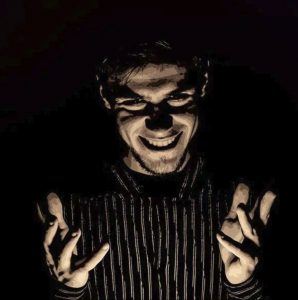 HALLOWEEN IS THE ONE
HALLOWEEN IS THE ONE  When we consider the future that technological change will bring about, it is tempting to envision a world taken over by robots, where the singularity has given way to superintelligent agents and human extinction. This is the image of our future we have grown accustomed to seeing in cinematic depictions, but it is not the future that British barrister Jamie Susskind wants us to worry about. Instead, in Future Politics: Living Together in a World Transformed by Tech, Susskind focuses on how digital technologies control human life rather than eliminate it.
When we consider the future that technological change will bring about, it is tempting to envision a world taken over by robots, where the singularity has given way to superintelligent agents and human extinction. This is the image of our future we have grown accustomed to seeing in cinematic depictions, but it is not the future that British barrister Jamie Susskind wants us to worry about. Instead, in Future Politics: Living Together in a World Transformed by Tech, Susskind focuses on how digital technologies control human life rather than eliminate it. In the summer of 1996, during an international anthropology conference in southeastern Brazil, Bruno Latour, France’s most famous and misunderstood philosopher, was approached by an anxious-looking developmental psychologist. The psychologist had a delicate question, and for this reason he requested that Latour meet him in a secluded spot — beside a lake at the Swiss-style resort where they were staying. Removing from his pocket a piece of paper on which he’d scribbled some notes, the psychologist hesitated before asking, “Do you believe in reality?”
In the summer of 1996, during an international anthropology conference in southeastern Brazil, Bruno Latour, France’s most famous and misunderstood philosopher, was approached by an anxious-looking developmental psychologist. The psychologist had a delicate question, and for this reason he requested that Latour meet him in a secluded spot — beside a lake at the Swiss-style resort where they were staying. Removing from his pocket a piece of paper on which he’d scribbled some notes, the psychologist hesitated before asking, “Do you believe in reality?”
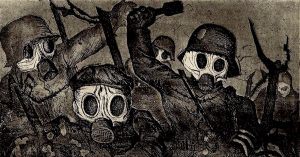 “The war has left its imprint in our souls [with] all these visions of horror it has conjured up around us,” wrote French author Pierre de Mazenod in 1922, describing the Great War. His word, horreur, appears in various forms in an incredible number of accounts of the war, written by English, German, Austrian, French, Russian, and American veterans. The years following the Great War became the first time in human history the word “horror” and its cognates appeared on such a massive scale. Images of catastrophe abounded. The Viennese writer Stefan Zweig, one of the stars in the firmament of central Europe’s decadent and demonic café culture before 1914, wrote of how “bridges are broken between today and tomorrow and the day before yesterday” in the conflict’s wake. Time was out of joint. When not describing the war as horror, the imagery of all we would come to associate with the word appeared. One French pilot passing over the ruined city of Verdun described the landscape as a haunted waste and a creature of nightmare, “the humid skin of a monstrous toad.”
“The war has left its imprint in our souls [with] all these visions of horror it has conjured up around us,” wrote French author Pierre de Mazenod in 1922, describing the Great War. His word, horreur, appears in various forms in an incredible number of accounts of the war, written by English, German, Austrian, French, Russian, and American veterans. The years following the Great War became the first time in human history the word “horror” and its cognates appeared on such a massive scale. Images of catastrophe abounded. The Viennese writer Stefan Zweig, one of the stars in the firmament of central Europe’s decadent and demonic café culture before 1914, wrote of how “bridges are broken between today and tomorrow and the day before yesterday” in the conflict’s wake. Time was out of joint. When not describing the war as horror, the imagery of all we would come to associate with the word appeared. One French pilot passing over the ruined city of Verdun described the landscape as a haunted waste and a creature of nightmare, “the humid skin of a monstrous toad.” The mesmeric work of Lou Harrison (1917–2003) stands apart from so much of the music written in 20th-century America—so singular is its idiom, so striking are its borderless, cross-cultural sounds—yet despite a swell of interest coinciding with the composer’s centennial last year, his scores are all too rarely heard. He was always something of an outsider, this unrepentant free spirit and individualist. Harrison studied with Arnold Schoenberg in the 1940s, when the 12-tone master was ensconced in Los Angeles, and gave serial techniques a serious go, but his best music—lyrical, melodic, indebted to the sounds of Southeast Asia—inhabits a different world from so much of the postmodern avant-garde.
The mesmeric work of Lou Harrison (1917–2003) stands apart from so much of the music written in 20th-century America—so singular is its idiom, so striking are its borderless, cross-cultural sounds—yet despite a swell of interest coinciding with the composer’s centennial last year, his scores are all too rarely heard. He was always something of an outsider, this unrepentant free spirit and individualist. Harrison studied with Arnold Schoenberg in the 1940s, when the 12-tone master was ensconced in Los Angeles, and gave serial techniques a serious go, but his best music—lyrical, melodic, indebted to the sounds of Southeast Asia—inhabits a different world from so much of the postmodern avant-garde. You’ve heard the argument before: Genes are the permanent aristocracy of evolution, looking after themselves as fleshy hosts come and go. That’s the thesis of a book that, last year, was christened the most influential science book of all time: Richard Dawkins’ The Selfish Gene. But we humans actually generate far more actionable information than is encoded in all of our combined genetic material, and we carry much of it into the future. The data outside of our biological selves—call it the dataome—could actually represent the grander scaffolding for complex life. The dataome may provide a universally recognizable signature of the slippery characteristic we call intelligence, and it might even teach us a thing or two about ourselves. It is also something that has a considerable energetic burden. That burden challenges us to ask if we are manufacturing and protecting our dataome for our benefit alone, or, like the selfish gene, because the data makes us do this because that’s what ensures its propagation into the future. Take, for instance, William Shakespeare.
You’ve heard the argument before: Genes are the permanent aristocracy of evolution, looking after themselves as fleshy hosts come and go. That’s the thesis of a book that, last year, was christened the most influential science book of all time: Richard Dawkins’ The Selfish Gene. But we humans actually generate far more actionable information than is encoded in all of our combined genetic material, and we carry much of it into the future. The data outside of our biological selves—call it the dataome—could actually represent the grander scaffolding for complex life. The dataome may provide a universally recognizable signature of the slippery characteristic we call intelligence, and it might even teach us a thing or two about ourselves. It is also something that has a considerable energetic burden. That burden challenges us to ask if we are manufacturing and protecting our dataome for our benefit alone, or, like the selfish gene, because the data makes us do this because that’s what ensures its propagation into the future. Take, for instance, William Shakespeare.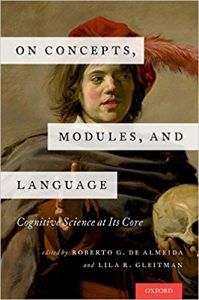 The cognitive revolution
The cognitive revolution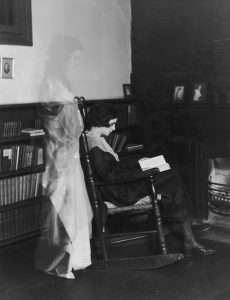 In 1960, the literary critic Leslie Fiedler delivered a eulogy for the ghost story in his classic study “Love and Death in the American Novel.” “An obsolescent subgenre,” he declared, with conspicuous relish; a “naïve” little form, as outmoded as its cheap effects, the table-tapping and flickering candlelight. Ghost stories belong to — brace yourself for maximum Fiedlerian venom — “middlebrow craftsmen,” who will peddle them to a rapidly dwindling audience and into an extinction that can’t come soon enough.
In 1960, the literary critic Leslie Fiedler delivered a eulogy for the ghost story in his classic study “Love and Death in the American Novel.” “An obsolescent subgenre,” he declared, with conspicuous relish; a “naïve” little form, as outmoded as its cheap effects, the table-tapping and flickering candlelight. Ghost stories belong to — brace yourself for maximum Fiedlerian venom — “middlebrow craftsmen,” who will peddle them to a rapidly dwindling audience and into an extinction that can’t come soon enough.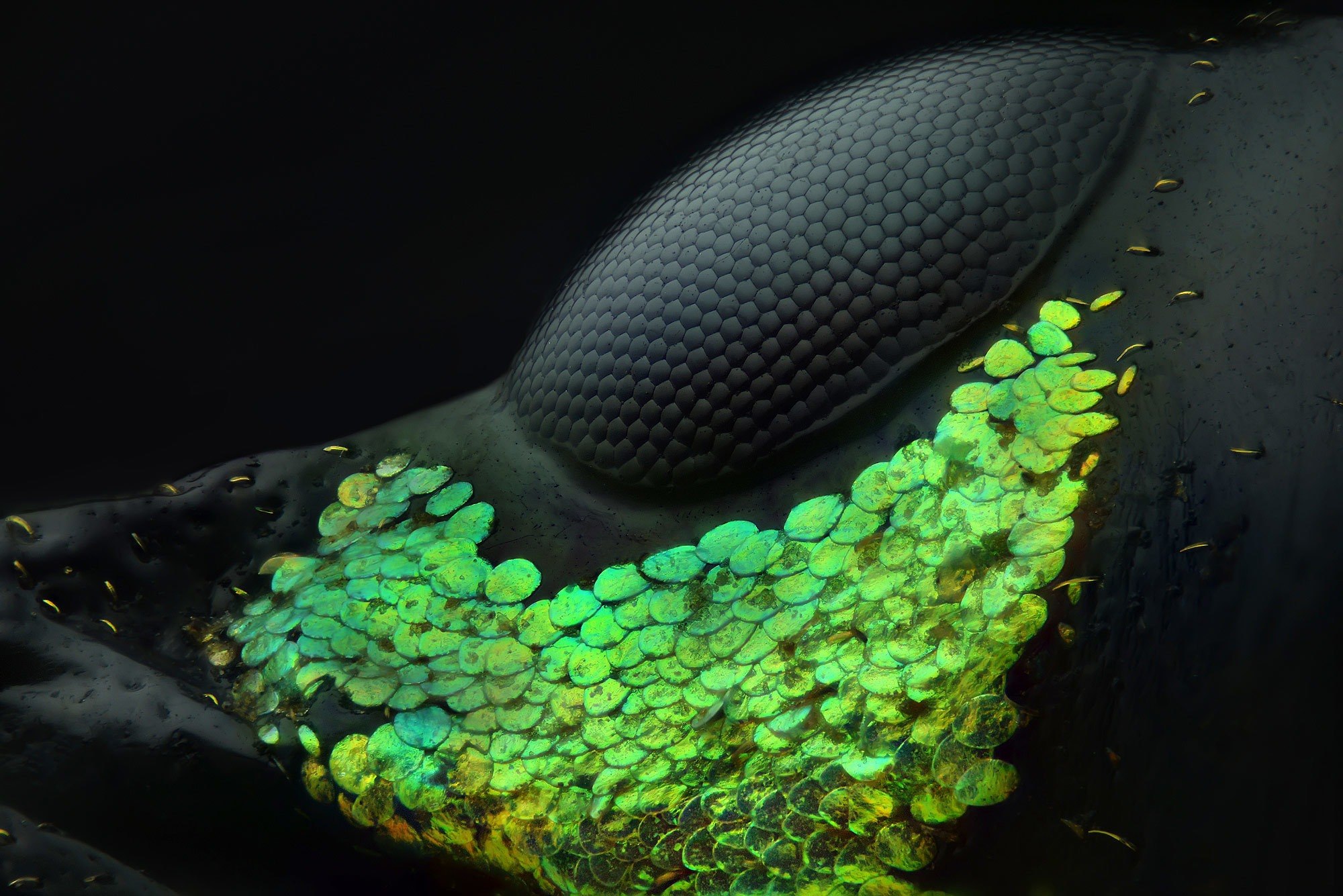
 Some of the scientists most often cited by the Intergovernmental Panel on Climate Change (IPCC) have taken the unusual step of
Some of the scientists most often cited by the Intergovernmental Panel on Climate Change (IPCC) have taken the unusual step of  NO WORKING WRITER believes in the shattering power of an encounter—with another person, with a new sensation, with possibility—more than Amélie Nothomb, the prolific Paris-based Belgian who’s published a novel a year since 1992’s Hygiène de l’assassin (rendered in English as Hygiene and the Assassin, though a more accurate title would be The Assassin’s Purity). Her first book offered an impressive blueprint of what would define her subsequent work: arrogant, infuriating personalities; vicious character clashes; childhood love so obsessive that it bleeds out over an adult’s entire history; and philosophical declarations about war. (Nothomb’s fervent worship of “war,” used to describe any grand conflict, is as distinctive a signature as her actual name.) “My books are more harmful than war,” brags the author at the center of Hygiene, “because they make you want to die, whereas war, in fact, makes you want to live.” His demeanor is so provoking that it incites murder, which is another Nothomb theme. People are always destroying one another. She’s killed a self-named avatar off on at least two separate occasions.
NO WORKING WRITER believes in the shattering power of an encounter—with another person, with a new sensation, with possibility—more than Amélie Nothomb, the prolific Paris-based Belgian who’s published a novel a year since 1992’s Hygiène de l’assassin (rendered in English as Hygiene and the Assassin, though a more accurate title would be The Assassin’s Purity). Her first book offered an impressive blueprint of what would define her subsequent work: arrogant, infuriating personalities; vicious character clashes; childhood love so obsessive that it bleeds out over an adult’s entire history; and philosophical declarations about war. (Nothomb’s fervent worship of “war,” used to describe any grand conflict, is as distinctive a signature as her actual name.) “My books are more harmful than war,” brags the author at the center of Hygiene, “because they make you want to die, whereas war, in fact, makes you want to live.” His demeanor is so provoking that it incites murder, which is another Nothomb theme. People are always destroying one another. She’s killed a self-named avatar off on at least two separate occasions.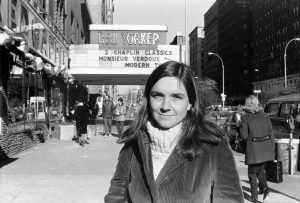
 To understand the literary Gothic – to even begin to account for its curious appeal, and its simultaneous qualities of seduction and repulsion – it is necessary to undertake a little time travel. We must go back beyond the builders putting the capstone on Pugin’s Palace of Westminster, and on past the last lick of paint on the iced cake of Horace Walpole’s Strawberry Hill House; back again another six hundred years past the rap of the stone-mason’s hammer on the cathedral at Reims, in order to finally alight on a promontory above the city of Rome in 410AD. The city is on fire. There are bodies in the streets and barbarians at the gates. Pope Innocent I, hedging his bets, has consented to a little pagan worship that is being undertaken in private. Over in Bethlehem, St Jerome hears that Rome has fallen. ‘The city which had taken the whole world’, he writes, ‘was itself taken.’ The old order – of decency and lawfulness meted out with repressive colonial cruelty – has gone. The Goths have taken the Forum.
To understand the literary Gothic – to even begin to account for its curious appeal, and its simultaneous qualities of seduction and repulsion – it is necessary to undertake a little time travel. We must go back beyond the builders putting the capstone on Pugin’s Palace of Westminster, and on past the last lick of paint on the iced cake of Horace Walpole’s Strawberry Hill House; back again another six hundred years past the rap of the stone-mason’s hammer on the cathedral at Reims, in order to finally alight on a promontory above the city of Rome in 410AD. The city is on fire. There are bodies in the streets and barbarians at the gates. Pope Innocent I, hedging his bets, has consented to a little pagan worship that is being undertaken in private. Over in Bethlehem, St Jerome hears that Rome has fallen. ‘The city which had taken the whole world’, he writes, ‘was itself taken.’ The old order – of decency and lawfulness meted out with repressive colonial cruelty – has gone. The Goths have taken the Forum.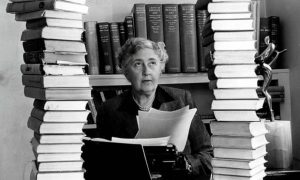 It’s dark. It’s cold. As I write this the rain is lashing down outside my window and beyond that – ugh! The world. Brexit, Trump, Putin. Danger, fear and uncertainty. I want warmth, I want comfort and I want to feel that somehow, somewhere, order might be restored. I want, in other words, to read a novel by
It’s dark. It’s cold. As I write this the rain is lashing down outside my window and beyond that – ugh! The world. Brexit, Trump, Putin. Danger, fear and uncertainty. I want warmth, I want comfort and I want to feel that somehow, somewhere, order might be restored. I want, in other words, to read a novel by  In the winter of 1994, a young man in his early twenties named Tim was a patient in a London psychiatric hospital. Despite a happy and energetic demeanour, Tim had bipolar disorder and had recently attempted suicide. During his stay, he became close with a visiting US undergraduate psychology student called Matt. The two quickly bonded over their love of early-nineties hip-hop and, just before being discharged, Tim surprised his friend with a portrait that he had painted of him. Matt was deeply touched. But after returning to the United States with portrait in hand, he learned that Tim had ended his life by jumping off a bridge.
In the winter of 1994, a young man in his early twenties named Tim was a patient in a London psychiatric hospital. Despite a happy and energetic demeanour, Tim had bipolar disorder and had recently attempted suicide. During his stay, he became close with a visiting US undergraduate psychology student called Matt. The two quickly bonded over their love of early-nineties hip-hop and, just before being discharged, Tim surprised his friend with a portrait that he had painted of him. Matt was deeply touched. But after returning to the United States with portrait in hand, he learned that Tim had ended his life by jumping off a bridge.